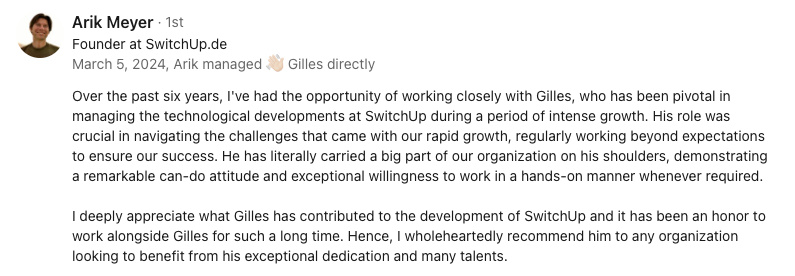Abstract:
The article emphasizes the overlooked market potential of accessibility, highlighting its dual benefits of profitability and social impact. It points out that the disabled community, comprising over a billion people worldwide, represents a significant demographic with substantial purchasing power—estimated at $1.2 trillion globally, rising to $8 trillion when including their families and friends. The piece argues that businesses can expand their customer base and align with consumer values by embracing accessibility, thereby improving brand perception and gaining competitive advantages. Real-world examples from companies like Microsoft and Apple illustrate successful integration of accessibility, showcasing how initiatives like Microsoft's "AI for Accessibility" and Apple's iOS features enhance usability and brand reputation. The article underscores that accessibility not only meets compliance standards but also fosters innovation and customer loyalty, with inclusive design serving as a catalyst for creativity and market differentiation. By prioritizing accessibility, businesses can tap into a vast market, drive revenue growth, and contribute to a more inclusive world.
Have you considered the market potential often overlooked by businesses? Accessibility opens up a world of opportunities that are both profitable and socially impactful. As companies seek growth, the disabled community emerges as a strong demographic with significant buying power. By focusing on accessibility, businesses can expand their customer base while aligning with values important to many consumers. With over a billion people globally experiencing disabilities, this market offers opportunities for innovation and growth for both startups and established companies. Embracing accessibility can position your business as a leader in inclusivity and technological innovation.
Exploring the Market Potential of Accessibility
Understanding the economic benefits of making technology accessible can give startups a strategic advantage. Engaging with the disabled community—a large, often overlooked market—can drive growth and creativity.
Demographic and Economic Insights
According to the World Health Organization, around 1 billion people worldwide have some form of disability, representing about 15% of the global population. In Europe, 87 million people, or 19% of the EU population, have disabilities. This is a significant market segment. Their economic influence is noteworthy, with purchasing power in Europe estimated at €500 billion annually. Recognizing the size and importance of this demographic can help businesses identify new market opportunities.
The Purchasing Power of the Disabled Community
There's a strong economic incentive for businesses to consider accessibility: the disposable income of people with disabilities is about $1.2 trillion globally, according to the Return on Disability Group. Including their family and friends, this figure rises to $8 trillion. This purchasing power presents an attractive reason for businesses to expand their markets by focusing on accessibility.
- Global Disposable Income: $1.2 trillion
- Extended Influence (Family and Friends): $8 trillion
Expanding Customer Base through Accessibility Initiatives
Companies can tap into the disability market by implementing accessibility initiatives. This not only increases their customer base but also aligns with consumer values. Accenture notes that most consumers prefer to buy from companies that reflect their values, which now include accessibility. Embracing accessibility helps build trust and improve brand reputation.
Real-World Examples of Accessibility Success
Let's examine how some companies have successfully integrated accessibility, offering lessons for others.
Microsoft's AI for Accessibility Initiative
Microsoft's AI for Accessibility program enhances its brand reputation by using AI to empower people with disabilities. This effort demonstrates that inclusivity and innovation can coexist, enhancing Microsoft's image as a leader in social responsibility.
Apple's Comprehensive iOS Accessibility Features
Apple has prioritized accessibility in its products, especially through iOS. Features like VoiceOver and Magnifier not only improve accessibility but also enhance user experience. Apple's commitment sets a high standard for tech companies, showing how accessibility can be part of everyday technology.
Accessibility Initiatives by Spotify and SAP
Spotify and SAP also illustrate the benefits of accessible technology. Spotify offers screen reader support and adjustable text sizes. SAP's software solutions expand business reach and user engagement. Focusing on accessibility not only meets compliance but encourages growth.
Embracing Accessibility for Brand Growth
Focusing on accessibility can improve brand perception and market position. It aligns with corporate values, enhancing reputation, consumer trust, and loyalty.
Building a Positive Brand Image
Aligning with accessibility reflects a company’s commitment to social values. A study by Accenture found 62% of consumers prefer brands that share their beliefs. Accessibility initiatives can enhance brand loyalty. Companies like Apple and Microsoft show how prioritizing inclusivity builds trust and loyalty.
Enhancing Customer Experience
Accessibility features often improve usability for everyone. Research by the Nielsen Norman Group shows that such improvements increase satisfaction. Universal design bridges gaps and enhances overall user experience.
Innovative technologies like voice assistants and adaptive controllers highlight accessibility’s potential. Devices like Amazon's Echo and Microsoft's Xbox Adaptive Controller not only serve specific needs but also offer new ways to engage with products.
Strategic Advantages of Accessibility in Tech
Adopting accessibility measures offers competitive, legal, and economic advantages for tech companies.
Competitive and Legal Benefits
Meeting accessibility standards helps tech companies comply with legal requirements and stand out. Many websites still don't meet basic standards, offering a chance to differentiate. Addressing these standards reduces legal risks and enhances competitive positioning.
Aligning accessibility with business goals brings benefits like improved market reach and financial performance. Reports from Microsoft and Accenture show accessible technology opens doors to a wider audience, driving financial gains.
Driving Revenue and Customer Loyalty
A loyal customer base is key to revenue growth. Forrester's research shows accommodating the needs of disabled individuals can lead to consistent revenue. Startups can focus on accessibility to build loyalty and success.
Startups that use accessible technology can expand their market and improve reputation. The Return on Disability Group and Microsoft suggest inclusive companies outperform peers and see more innovation. Focusing on accessibility from the start provides a unique market position.
Harnessing Inclusive Design for Technological Innovation
Inclusive design can help businesses stand out in tech. It fosters creativity and opens new ways for user engagement.
Innovation through Inclusive Design
Inclusive design can lead to innovation. Kat Holmes describes it as creating products that cater to diverse needs, leading to creative problem-solving. Microsoft's Inclusive Design Toolkit shows how considering diverse needs creates solutions that benefit everyone.
Microsoft's Xbox Adaptive Controller is a prime example. It was made for gamers with limited mobility, showing how inclusivity can lead to innovation. Its success broadens Microsoft's market and sets a precedent for inclusive products. Airbnb's accessible design also ensures diverse needs are met.
Competitive Edge through Innovation
Inclusive design gives companies a competitive edge. Local Motors' Olli, an autonomous shuttle with accessibility in mind, enhances user experience and sets the company apart.
Inclusive design is crucial for tech startups. It allows them to grow faster and reach more people. This focus helps them stand out and attract diverse customers, fostering loyalty.
Embracing accessibility is a smart strategy for inclusivity and innovation. By focusing on accessibility, companies can reach over a billion people globally and grow their customer base. The purchasing power of individuals with disabilities offers significant opportunities. Real-world examples from Microsoft and Apple show how accessibility boosts brand reputation and loyalty. As businesses align with consumer values, they build trust and enhance their competitive edge. Consider how your company might innovate through inclusive design. What steps can you take to ensure your products or services are accessible to all? Let's think about how we can all contribute to a more inclusive world.














